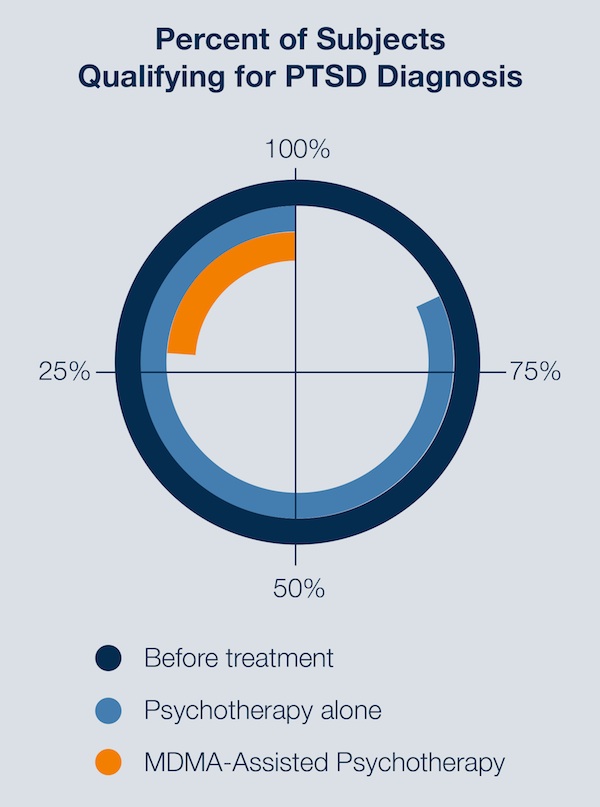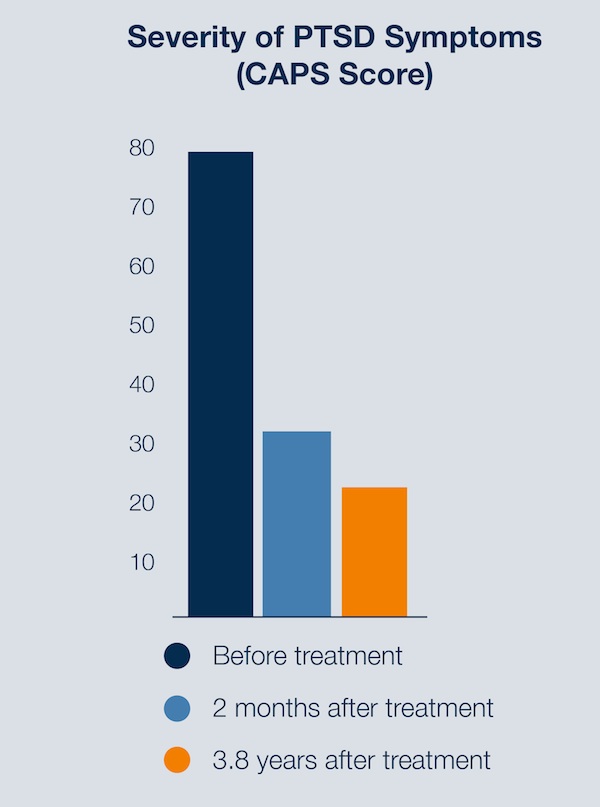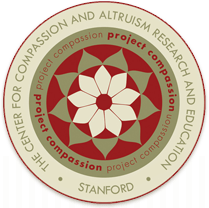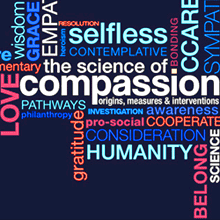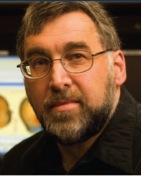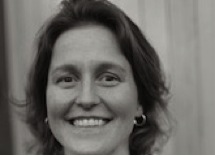
This is a real basic overview of cult structure and behavior, written by Jan Groenveld, a woman who had been both a Jehovah's Witness and a Mormon. Here is a brief background from Wikipedia:
Jan Groenveld (1945 – 22 October 2002) was a former member of the LDS Church and the Jehovah's Witnesses. She spent a total of fifteen years in these organizations before leaving them in 1975. After her negative experiences in these organizations, she resolved to make more information about what she saw as "cults" available to the general public. Her personal experiences involving these groups were featured in Richard Guilliatt's book, Talk of the Devil.
Groenveld coined the often quoted phrase:
“The most dangerous lie is that which most closely resembles the truth.”
The author offers Jehovah's Witnesses as an example for several of her points below. Smaller organizations often have similar traits in a smaller scale. Additionally, a lot of this information applies to charismatic teachers and spiritual leaders, as well.
SOCIAL PSYCHOLOGY AND GROUP DYNAMICS
Written by Jan Groenveld
(email: py101663@dingo.cc.uq.oz.au)
May be distributed freely providing it contains the above identifying information and the text is not altered in any way.
Studies have shown that today's cults use a stronger form of control than those of 50 years ago. The advent of new psychological experiments in the 60's and 70's have produced the modern methods of mind control which are far more sophisticated than the BEHAVIOR MODIFICATION TECHNIQUES and THOUGHT REFORM developed by the Chinese. To understand mind control you need a basic understanding of Behavior Modification Techniques.
What is BEHAVIOR MODIFICATION?
Simply described, it is "reward or punishment for actions" association. It was used on you as a child whenever you were being commended or otherwise for your behavior.
Taking away a privilege is usually a sure-fire method to persuading a child to change its behavior when that child is old enough to under-stand the process. Praising a child for doing good is another method of changing behavior, especially in the child who is anxious to please. The rod of education applied to the seat of learning is another method of bringing about a desired behavior change.
When behavior modification techniques such as these are applied in a loving, caring and consistent way, the child changes their behavior without holding feelings of resentment. However, if these techniques are perverted in any way, damage is done to the child's psyche, their emotions, e.g., the abused child syndrome. Cults use a sophisticated and perverted form of behavior modification which damages an individual’s emotions.
COGNITIVE DISSONANCE
Leon Festinger is a psychologist who studied groups that predicted the end of the world. He found that most members became stronger than ever when the prophecy failed. His investigation revealed that members had to find a way to cope psychologically with the failure. They needed to maintain order and meaning in their life. They needed to think they were acting according to their self-image and values. Festinger described this contradiction which they had to overcome as what has become known as the Cognitive Dissonance Theory.
The three components he described are:
CONTROL OF BEHAVIOR - CONTROL OF THOUGHTS - CONTROL OF EMOTIONS
Each component has a powerful effect on the other two: CHANGE ONE AND THE OTHERS WILL TEND TO FOLLOW. When all three change the individual undergoes a complete change. Festinger summarized the basic principle:
"If you change a person's behavior, his thoughts and feelings will change to minimize the dissonance."
When there is a conflict between thoughts, feelings or behavior, then those in conflict will change to minimize the contradiction. This is because a person can only tolerate a certain amount of discrepancy between these components which make up his identity. In cults this dissonance is created to exploit and control them.
Steven Hassan, author of Combating Cult Mind Control, added a fourth component to Festinger's: CONTROL OF INFORMATION
By controlling the information one receives you can control and restrict the individual's ability to think for himself. You limit what he is able to think about.
BEHAVIOR CONTROL - The control of an individual's physical reality
This can include control of where he lives, what he eats, his clothing, sleep, job, rituals etc. This is why most cults have a stringent schedule for members. There is always something to do in destructive cults. Each cult has its own distinctive set of behaviors that bind it together. This control is so powerful that the cult member will actually participate in their own punishment and come to believe he actually deserves it! No one can command a person's thoughts but IF YOU CAN CONTROL BEHAVIOR THEN HEARTS AND MINDS WILL FOLLOW.
THOUGHT CONTROL - The control of an individual's thought processes
The indoctrination of members so thoroughly that they will manipulate their own thought processes. The ideology is internalized as "the truth". Incoming information is filtered through the beliefs that also regulates how this information is thought about.
The cult has its own language which further regulates how a person thinks. This puts a great barrier between cult members and outsiders.
Another form of control is "thought stopping" techniques. This can take many forms: chanting, meditating, singing, humming, tongues (some even pay money to learn it), concentrated praying, etc. The use of these techniques short-circuits the persons' ability to test reality. The person can only think positive thoughts about the group. If there is a problem the member assumes responsibility and works harder.
EMOTIONAL CONTROL - The control of the individual’s emotional life
This manipulates a person's range of feelings. Guilt and fear are used to keep control. Cult members cannot see the control by guilt and like other abuse victims are conditioned to blame themselves when things are wrong, even grateful when a leader points their transgressions.
Fear is used to manipulate two ways. The first is to create an outside enemy (we vs them) who is persecuting you. The second is the fear of punishment by the leaders if you are not "good enough." Being "good enough" is following the ideology perfectly. The most powerful emotional control is phobia indoctrination. This can give the person a panic reaction at the very thought of leaving the group. It is almost impossible to conceive that there is any life outside the group. There is no physical gun held to their heads but the psychological gun is just as if not more powerful.
INFORMATION CONTROL - The control of the individual’s information sources
Deny a person the information needed to make a sound judgment and he will be incapable of doing so. People are trapped in cults because they are denied both the access to the critical information they need to assess their situation. The psychological chains on their minds are just as powerful as if they were locked away physically from society. So strong is this psychological process they also lack the properly functioning internal mechanism to process any critical information placed in front of them.
THE EIGHT MARKS OF MIND CONTROL TOTALISM - ALL OR NOTHING
Mind Control is a PROCESS of eradicating former beliefs and instituting new beliefs in their place through the use of COERCIVE persuasion. It is a PROCESS which is designed to break a person's independence and individuality and replace it with the ideology clone. The Chinese called this process "thought reform" which was poorly translated into English as "brain-washing".
BRAIN-WASHING
Brain-washing is now considered to be a different process to thought reform or mind control. In brain-washing the victim knows who is the enemy. An example is American Patty Hearst who was kidnapped by a terrorist group. Through physical abuse she finally became a member of the group and took part in terrorist activities and bank robberies.
THOUGHT CONTROL
Thought control is more subtle. The victim doesn't know who is the enemy because the enemy seems like their best friend who only has their best interests at heart.
Cults practice a more refined form of thought control than that used by the Chinese. Leading psychologist, Dr Margaret Singer, said cults do it better than the Chinese because it is easier to get people to do what you want through manipulating them with guilt and anxiety. During this process the prospective recruit is re-educated and will abandon the precepts he has learnt from life for the "truth" or "enlightenment" offered by the group. In some cults this is done over a long period of time; Other cults can bring about this change within 48 hours. Whichever way the process takes place the results are the same. The individual has undergone a total change in personality and is often unrecognizable by their family.
The process of thought control has been documented by Robert J Lifton who researched what happened to the American prisoners of the Communist Chinese. He labeled the steps which have become the standard by which to judge whether a group is using "brain-washing" or "thought reform" on its recruits.
Robert J Lifton's research showed that -
"These criteria consist of eight psychological themes which are predominant within the social field of the thought reform milieu. Each has a totalistic quality; each depends upon an equally absolute philosophical assumption; and each mobilizes certain individual emotional tendencies, mostly of a polarizing nature. Psychological theme, philosophical rationale, and polarized individual tendencies are interdependent; they require, rather than directly cause, each other. In combination they create an atmosphere which may temporarily energize or exhilarate, but which at the same time poses the gravest of human threats." (Thought Reform & the Psychology of Totalism, p 420)The eight marks noted by Lifton are:
1. MILIEU CONTROL - Control of the Environment and Communication
The control of human communication is the most basic feature of the thought reform environment. This is the control of what the individual sees, hears, reads, writes, experiences and expresses. It goes even further than that, and controls the individuals communication with himself - his own thoughts.
Everything other than their beliefs is excluded. The organization appears to be omniscient. They seem to know everything that is going on. Reality is their exclusive possession. In this environment the individual is deprived of the combination of external information and internal reflection required to test reality and to maintain a measure of identity separate from his environment. The individual can feel victimized by his controllers and feel the hostility of suffocation - the resentful awareness that his striving toward new information, independent judgment and self-expression are being thwarted.
EXAMPLE - Jehovah's Witnesses are a classical example of a closed community living within and mixing with the wider community. Because they are so well known we have used them as an example.
In Jehovah's Witnesses
- You could "go beyond the 'truth' - beyond what they taught. This showed you were thinking for yourself and put yourself above leadership. Those moving ahead of the Organization are counseled2. MYSTICAL MANIPULATION - The Mystique of the Organization
- No gatherings other than those allowed or organized by organization (1982).
- Not making comments from your own thoughts at the meetings. Only comments from the study articles are permitted. No independent thinking is permitted.
- The organization always seemed to know what was going on in your congregation and article appeared in Watchtower publications just at the right time ("food at the proper time"). This was done through Circuit Servants reports to Headquarters.
- Use of 'publisher record cards' etc. to monitor activities of members. Watchtower is aware of trends etc. by strict reporting and control of individual Witnesses activities.
- Report on fellow brothers & sisters (cannot get away from organization)
- Monitoring or observation of disfellowshipped or marked people.
- Non Witnesses are viewed as 'bad association'
- Worldly education discouraged - better to go door-to-door
- Employment that takes up time which should be devoted to Watchtower activities is also discouraged.
- Should be 'buying out the opportune time' in 'theocratic activities'.
- Taught to indoctrinate self!
- 'Shepherding' of those who fall behind.
This seeks to provoke specific patterns of behavior and emotion in such a way that these will appear to have arisen spontaneously from within the environment. For the manipulated person this assumes a near-mystical quality. This is not just a power trip by the manipulators. They have a sense of "higher purpose" and see themselves as being the "keepers of the truth." By becoming the instruments of their own mystique, they create a mystical aura around the manipulating institution - the Party, the Government, the Organization, etc. They are the chosen agents to carry out this mystical imperative.
The pursuit of this mystical imperative supersedes all considerations of decency of immediate human welfare. The end justifies the means. You can lie, deceive or whatever to those outside the organization. Association with the "outside" is only to benefit their own cause in some way. Some cults like Moonies and Hare Krishna's call their deception "heavenly deception" or "transcendental trickery". Members believe in the ideology to such a degree that they rationalize these deceptions. Members are kept in a frenzy of cult related activities. There is little time or energy to think about their lifestyle.
"The psychology of the pawn" - This person feels unable to escape from forces he sees more powerful than himself. His way of dealing with this is to adapt to them. He learns how to anticipate problems with the organization and to manipulate events to avoid incriminating himself. This is the person who has been in the organization long enough, knows something is wrong, is on the verge of leaving then suddenly becomes very loyal. They sell out to the organization and will turn in friends who may have confided in them.
In Jehovah's Witnesses
- "Theocratic strategy" - If you don't have a right to know the truth it is OK to lie to you. (See "Insight" under 'Lie')3. DEMAND FOR PURITY - Everything is black & white
- Avoid telling prospects- No blood, holidays, family, friends, etc
- Bring someone new each time they call so prospect gets to know the people at the Kingdom Hall when they attend. (Planned spontaneity)
- The ideology supersedes the welfare of the individual. They are not involved in charities outside the group [or in the group].
- Not helping fellow memmbers to the detriment of promoting the ideology. This is more important than helping the sick & elderly.
- Prayers are general - for the organization not the needs of the individual. See God as not interested in you as a person.
- Blessed only for effort in promoting the Kingdom.
- Ability of organization to accomplish the 'preaching work' seen as evidence of Jehovah's blessing, direction and angelic help
- Jehovah 'sifts out' those not truly 'in the truth', those without 'the right heart condition' which is why people leave or must be disfellowshipped. No one leaves legitimately.
Pure and impure is defined by the ideology of the organization. Only those ideas, feelings and actions consistent with the ideology and policy are good. The individual conscience is not reliable. The philosophical assumption is that absolute purity is attainable and that anything done in the name of this purity is moral. By defining and manipulating the criteria of purity and conducting an all-out war on impurity (dissension especially) the organization creates a narrow world of guilt and shame. This is perpetuated by an ethos of continuous reform, the demand that one strive permanently and painfully for something which not only does not exist but is alien to the human condition.
Under these conditions the individual expects humiliation, ostracism and punishment because of his inability to live up to the criteria and lives in a constant state of guilt and shame. Since the organization is the ultimate judge of good and evil, this guilt and shame is used to manipulate and control members. The organization becomes an authority without limit in the eyes of members and their power is nowhere more evident than in their capacity to "forgive".
All impurities are seen to originate from "outside" (the world). Therefore, one of the best ways to relieve himself of the burden of guilt is to denounce these with great hostility. The more guilty he feels, the greater his hatred, the more hostile is his denouncement. Organizationally this eventually leads to purges of heretics, mass hatred and religious holy wars. The group will point to the mistakes of all other belief systems while promoting their own purity. This gives the impression that their organization is perfect, clean and pure as a people or group.
In Jehovah's Witnesses
- Dress and grooming have been laid down at various times. These rules change at the whim of the leaders.No pantsuits for ladies - No beards or moustaches on men
Short hair on men - No colored shirts for men
No gold rimmed glasses - Certain styles of clothing prohibited- Only 2 organizations: Jehovah's and Satan's. You cannot be part of both.4. CULT OF CONFESSION - Reporting to leadership
- World has no conscience - all dishonest
- Must keep clear of worldly celebrations (Christmas, Easter, Birthdays, Mother's & Father's Day, Thanksgiving etc)
- Loyalty displayed through meeting attendance and participation, field service, choice of marriage partners [strong 'in the truth'], shunning disfellowshipped relatives and friends.
This is closely related to the demand for purity. Confession is carried beyond the ordinary religious, legal and therapeutic expressions to the point of becoming a cult in itself. In totalist hands, confession becomes a means of exploiting, rather than offering solace for these vulnerabilities.
Totalist confession is an act of self-surrender, the expression of the merging of the individual and environment. There is a dissolution of self, talents, and money. It’s about conformity.
The cult of confession has effects quite the reverse of its ideal of total exposure; rather than eliminating personal secrets, it increases and intensifies them.
The individual becomes caught up in continuous conflict over which secrets to preserve and which to surrender, over ways to reveal lesser secrets can be revealed and ways to protect more important ones.
The cult of confession makes it virtually impossible to attain reasonable balance between worth and humility.
In Jehovah's Witnesses
- Confessing infringements to an Elder.5. SACRED SCIENCE - Absolute "Truth"
- Putting in field reports (test of spirituality) [A monthly report of one's activities for that month. How many hours door-knocking; number of books and magazines sold; number of people one studied doctrine with etc.]
- Accept orders without question. Ask "How high" when told to jump.
- Any who are aware of another's sin must put this one in to the elders or the guilt will rest on their shoulders.
- Congregation is made aware of the sin through talks and restrictions placed on guilty ones.
Their "truth" is the absolute truth. It is sacred – beyond questioning. There is a reverence demanded for the leadership. They have ALL the answers. Only to them is given the revelation of "truth".
The ultimate moral vision becomes the ultimate science and the person who dares to criticize it, or even think criticism, is immoral, irreverent and "unscientific".
The assumption here is not so much that man can be God, but rather that man's IDEAS can be God.
This gives sense of security to the member. They are confident they can get the answer to the most difficult problem or question.
In Jehovah's Witnesses
- You can be disfellowshipped (kicked out) for daring to question what is taught in their publications.6. LOADING THE LANGUAGE - Thought terminating clichés
- Watchtower demands full devotion of members. Must not question the Organization (= questioning God)
- There is an answer to everything, if you cannot find it in the publications you must 'wait on Jehovah' and not 'push ahead'.
- Organization itself will survive Armageddon but individual Jehovah's Witnesses have no such assurance.
Everything is compressed into brief, highly reductive, definitive-sounding phrases, easily memorized and easily expressed.
There are "good" terms which represents the groups ideology and "evil" terms to represent everything outside which is to be rejected. Totalist language is intensely divisive, all-encompassing jargon, unmercifully judging. To those outside the group this language is tedious - the language of non-thought.
This effectively isolates members from outside world. The only people who understand you are other members. Other members can tell if you are really one of them by how you talk.
This narrowness of the language is constricting. The individual is linguistically deprived because language is central to the human experience and his capacities for thinking and feeling are immensely restricted.
While initially this loaded language can give a sense of security to the new believer, an uneasiness develops over time. This uneasiness may result in a withdrawal into the system and he preaches even harder to hide his problem and demonstrate his loyalty. It may also produce an inner division and the individual will publicly give the right performance while privately have his own thoughts.
Either way, his imagination becomes increasingly disassociated from his actual life experiences and may even tend to atrophy from disuse.
e.g. - In Jehovah's Witnesses
- Theocratic strategy - "ark of salvation" - "new light"7. DOCTRINE OVER PERSON - Doctrine supersedes human experience
- "meat in due season" - "faithful & discreet slave" - "apostate"
- "The anointed" - Book study - Christendom
- "Christ Jesus" instead of "Jesus Christ"
- 'back calls' now called 'return visits' (terminology changes indicate who might be falling behind or who is not really a member)
- "Jehovah will take care of it in his due time."
- "It's the truth" - doesn't matter if they make a mistake
- Where else is there to go?
- Worldly - Governing Body - New System of Things
The ideological myth merges with their "truth" and the resulting deduction can be so overpowering and coercive that is simply replaces reality. Consequently past events can be altered, rewritten or even ignored to make them consistent with the current reality. This alteration is especially lethal when the distortions are imposed on the individual's memory.
They demand character and identity of a person be reshaped to fit their clone of mentality. The individual must fit the rigid contours of the doctrinal mold instead of developing their own potential and personality.
The underlying assumption is that the doctrine - including its mythological elements - is ultimately more valid, true and real than is any aspect of actual human character or human experience. The individual under such pressure is propelled into an intense conflict with his own sense of integrity, a struggle which take place in relation to polarized feelings if sincerity and insincerity.
Absolute sincerity is demanded by the group yet this must be put to one side when changes take place the individual has to deny the original belief ever existed. Personal feelings are suppressed and members must appear to be contented and enthusiastic at all times.
Some cults believe that all illness is a result of lack of faith and evidence of sin in your life. These things have to be prayed away and medical attention is ignored as a "sign of faith."
In Jehovah's Witnesses
- "There is no life outside the organization" so when they see people who have made a life outside they revert back to doctrine over what they see.8. DISPENSING OF EXISTENCE - Who is worthy to live
- If an experience doesn't fit, it must be demons.
- Will ignore needs of others because doctrine overrides human experience, i.e., will ignore needs of disfellowshipped or marked persons no matter how serious those needs are.
- Those who were JW's before 1975 and are still JW's will deny they ever believed Armageddon was due that year - even those who sold homes, delayed medical treatment etc.
- Watchtower has final authority even over personal experience. Blood transfusions, etc. Conscience matters are discussed only in the light of Watchtower doctrine (not left to individuals' consciences).
They have the right to decide who is worthy of life and who isn't. They also decide which history books are accurate and which are not. Those in the organization are worthy of life; those outside worthy of death. The outsiders can be permitted to live if they change and become an insider. Members live in fear of being pronounced "dead".
They have a fear of annihilation or extinction. The emotional conflict is one of "being vs nothingness".
Existence comes to depend upon creed (I believe, therefore I am), upon mission (I obey, therefore I am) and beyond these, upon a sense of total merger with the organization. Should he stray from the "truth" his right to exist may be withdrawn and he is pronounced "dead".
In Jehovah's Witnesses
- "Sheep and goats" - how one responds to "Christ's brothers" decides their future. ("Christ's brothers" are those who rule the organization. How you respond to their message as carried by their messengers decides your eternal future).
- Elders decide who is worthy of life at Judicial Committee meetings.
- They decide who is worthy of a resurrection - (Sodom & Gommorah).
- Disfellowshiping 'sinners' denies them any hope for a future outside the Organization.
- They will blatantly lie to achieve goals and consider this to be "theocratic strategy".
- Any information contrary to the Watchtower 'system' is not considered worth listening to or reading.
- Witnesses are forbidden to discuss such information, especially if is considered 'apostate' [put together by former members]
IN SUMMARY
The more clearly these eight points are obvious, the greater the resemblance to ideological totalism. The more an organization utilizes such totalist devices to change individuals, the greater its resemblance to thought reform.
Remember . . . A group does not have to be religious to be cultic in behavior. High demand groups can be commercial, political and psychological. Be aware, especially if you are a bright, intelligent and idealistic person. The most likely person to be caught up in this type of behavioral system is the one who says "I won't get caught. It will never happen to me. I am too intelligent for that sort of thing."
Written by Jan Groenveld
Internet Address: py101663@mailbox.uq.oz.au
Fidonet Address : 3:640/316
(c) Cult Awareness & Information Centre, PO Box 2444,
Mansfield 4122, Australia,
May be distributed freely providing it contains the above identifying information and the text is not altered in any way.


